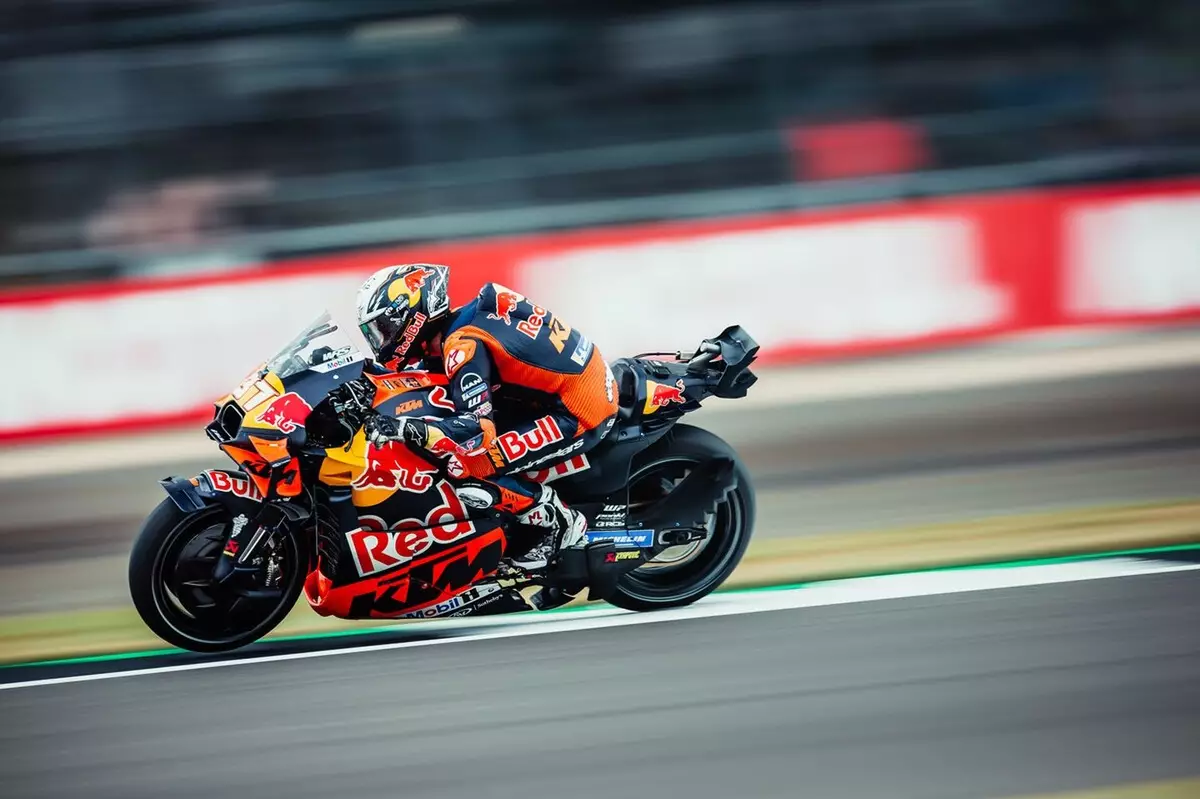In the ever-competitive arena of MotoGP, KTM finds itself at a crossroads as it navigates the challenges posed by the 2025 season. Despite moments of brilliance, the Austrian motorcycle manufacturer has struggled to maintain a consistent performance level. As the riders’ standings showcase, Pedro Acosta ranks as the highest KTM rider at ninth place, with teammate Brad Binder trailing behind in fourteenth. Such results highlight the deepening concerns within the KTM factory squad.
The uncertainty surrounding KTM’s trajectory in the sport is further complicated by their unclear participation status for the 2027 season. It raises pivotal questions about the company’s future and competitiveness, leading us to evaluate not only on-track performance but also the broader strategic vision that lies under the hood.
Rider Perspectives and Pressures
When examining the sentiments expressed by KTM riders, a sense of discontent becomes apparent. Acosta, despite last year’s impressive podium finishes, remains grounded in his expectations. “First let’s see how we start the weekend,” he stated, acknowledging the stiff competition from seasoned riders like Francesco Bagnaia. His awareness of the racing landscape reflects a mature understanding of the sport and its unpredictable nature—emphasizing that podiums should not be taken for granted.
Moreover, Acosta did not shy away from pointing out the flaws in KTM’s qualifying performance, calling it “a disaster.” This candidness reflects the frustration simmering within the team as they strive to improve their results but find themselves falling short. Such forthright comments reveal the intense pressure on riders to perform while navigating the technological and strategic shortcomings of their machines.
In juxtaposition, Binder adopts a more optimistic outlook, yet it is clear that both riders are seeking a transformative approach from their team’s management. After a visit to KTM’s headquarters, he noted the ongoing development initiatives, which could be game-changing in the long run. The contrasting perspectives between Acosta’s frustration and Binder’s optimism encapsulate the divided ethos present in the ranks of KTM.
Challenges and the Road Ahead
KTM’s developmental strategy must address fundamental performance gaps if the team hopes to be competitive. The riders urge for focused enhancements in cornering speed and overall bike handling—areas that have hindered their performance significantly. Binder succinctly articulates the need for improvements: “If we can turn a bit better and roll a bit more speed into the corners, it will make a big difference.” This statement underscores the critical need for innovation and adaptability in the fast-paced MotoGP environment.
However, KTM’s forward-looking vision presumes a long-term commitment. The murmurs of a strategic wait for the new regulations in 2027 could prove to be a double-edged sword. At this moment, the team risks stagnation, a vital issue in a series that rewards rapid adaptation and evolution. The stakes have never been higher; making bold, informed decisions is essential to solidifying KTM’s position on the grid.
The Balance Between Innovation and Results
Navigating the intersection of innovation and immediate performance results presents a daunting task for KTM. The success of their engineering efforts may not show immediate dividends on the track, creating a dilemma that may cost them valuable standing in the current championship. The impatience within the team is palpable, and the question remains: Can KTM balance the pressing need for performance with the longer-term vision for technological advancement?
In a sport defined by agility and speed, the ability to pivot strategies quickly is imperative. Acosta and Binder’s roles go beyond merely racing; they embody the aspirations of a brand that seeks to cement itself as a force within MotoGP. As the narrative unfolds, KTM’s approach to prioritizing future potential while striving for current results will be crucial as they attempt to rev up their engines in unison with the evolving competition.
In an unpredictable world of racing, where fortunes can shift in a heartbeat, the time for decisive action and clarity is now. The future of KTM depends on their ability to merge innovation with immediate results, all while keeping their riders motivated and competitive. Only then can they hope to reclaim their status as a formidable contender in the championship.


Leave a Reply